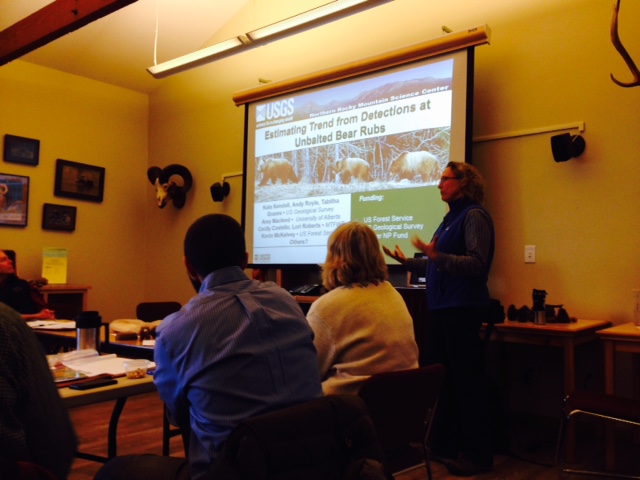From Debo Powers, NFPA President, comes the following report . . .
Representatives from all of the agencies who manage and/or research grizzly bears in the Northern Continental Divide Ecosystem (NCDE) met on Wednesday, December 2, at Lone Pine State Park near Kalispell to share information about grizzly bear recovery efforts. The meeting room was packed with agency personnel, scientists, representatives from conservation groups (including NFPA), and the general public.
Chris Servheen, who reported on the Grizzly Bear Conservation Strategy, said that they are building the foundation for delisting grizzly bears, but are not ready to make that proposal yet. He indicated that the Conservation Strategy should be finalized by the end of 2016. He stated that within the next ten years, there should be connectivity (bears moving freely) between the NCDE and Yellowstone which will insure genetic viability between these bear populations.
Bear Management specialists from each district (including Tim Manley) reported on 2015 bear management activities, including human conflicts. According to Tim, chickens topped the list of attractants causing bear problems. Cat food was the second biggest problem.
Each agency (FS, FWP, DNR, GNP, BLM, FWS, Salish Kootenai and Blackfoot Tribes) gave updates related to the Draft Habitat Standards for the lands that they manage.
Cecily Costello (who replaced Rick Mace after he retired) presented updated figures on Population Monitoring. Estimates are that there are 837-1039 grizzlies in the NCDE with a 2.3% increase in the population each year. (This is a smaller increase than the estimates that Rick Mace made in 2012 which showed a 3.1% increase annually.)
Tabitha Graves presented research on how climate change is affecting huckleberries, which is a keystone species for lots of wildlife including grizzlies. Food supply affects reproduction and survival. This year, the berry size was smaller and there was lower productivity. There was a month difference in the timing for berry development this year and scientists are expecting this year’s weather patterns to happen more frequently. The question is: In future seasons, how will this affect grizzly populations and the number of human conflicts if food is scarce?
The meeting ended with a few questions from the public.
